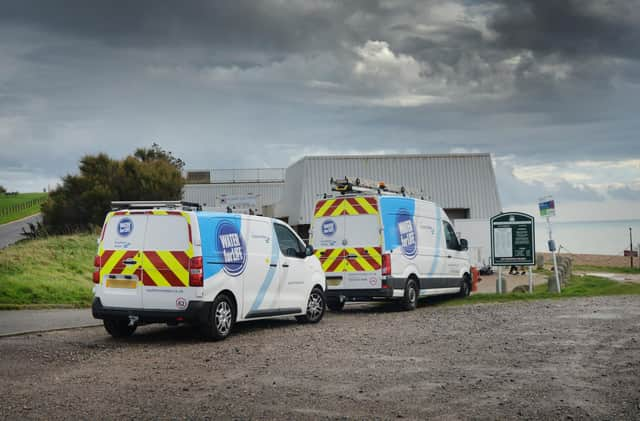Southern Water quizzed by Lewes councillors on plans to reduce wastewater releases into rivers and sea


On Thursday (November 3), Lewes District Council’s Performance and Policy Advisory Committee grilled representatives on the company’s plans to prevent sewage being released into seas and rivers.
They were asked why the company has been unable to prevent wastewater releases so far, as well as the steps being taken to prevent it.
Advertisement
Hide AdAdvertisement
Hide AdToby Willison, director of environment and corporate affairs at Southern Water, said: “There is the capacity to treat all the dry weather flow, the capacity is exceeded because of rainfall and associated run-off [and] that is when we see spilling into rivers and seas.
“What we have seen in the last few years is the significant increase in the frequency of particularly intense rainfall events in the summer, driven by climate change, and it is that intensity that causes a problem.”
Dr Willison went on to say that part of the problem was the result of ‘urban creep’, which had increased the amount of non-permeable land within the south east. This, he said, meant more water was flowing directly into the sewer system, rather than into the ground.
While he stressed the sewerage releases were generally legal, Dr Willison said the company was working to reduce them. This, he said, included an £83m investment into pollution reduction work, alongside other investments to reduce its use of Combined Sewage Overflows (CSOs).
Advertisement
Hide AdAdvertisement
Hide AdThe committee heard about the use of these CSOs from Nick Mills, head of pollution and flooding resilience.
He said: “Unfortunately they are there to prevent flooding and they need to remain there until we find a solution to where that water goes, because if we don’t that water needs to find a home and we don’t want it to find a home in people’s homes.”
The work to reduce their use included plans to divert rainwater and surface water runoff away from the sewer system as well as slowing down water coming into it from other places.
Overall, Dr Mills said, the investment required to fully achieve those aims and meet the standards set out in the Environment Act would come to around £2bn.
Advertisement
Hide AdAdvertisement
Hide AdAdrian Ross (Green, Lewes Bridge) described how that day had seen widespread floods, with Southern Water’s Beachbuoy tool showing reported or confirmed releases to all bathing sites in the district. He added: “In light of that, I think some of your assurances will ring a bit hollow to this committee and our residents. I’m delighted to hear that you’ve got enough capacity to process sewage on dry days. It is not dry days we worry about, it is days like today when sewage goes out into rivers and the sea.”
In response, Dr Willison said they knew their performance had not been good enough, but were ‘absolutely committed to turning that around’.
He added: “I don’t think CSOs spilling are acceptable in day and age. It is precisely for that reason we have Nick and his taskforce in place to find ways of rectifying that.
“But equally, we have to recognise that, as the system operates at the moment, on days like today and yesterday, where there has been very intense rainfalls, there will be spilling from our CSOs and there will be surface water flooding.”